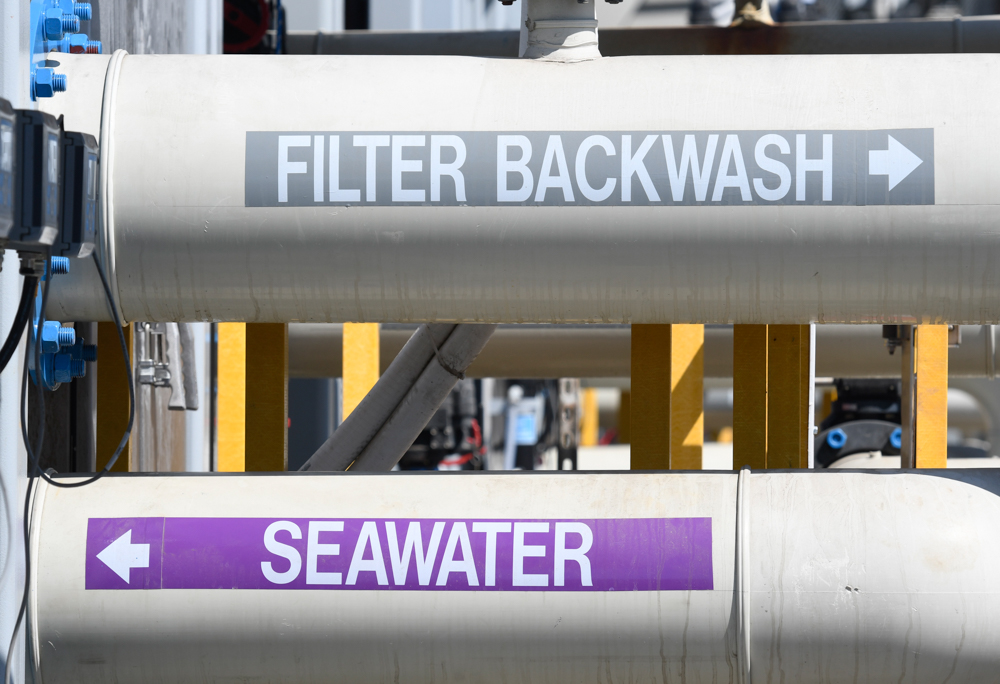With eight months left until the end of the year, the City of Santa Barbara is 8 percent shy of its goal to have half the power used by its municipal buildings come from renewable energy sources by 2020.
Since the Santa Barbara City Council committed to the goal in 2017, the city started installing three small scale solar arrays, two at fire stations and the last at the Eastside Branch Library, which began going up only this past week, said Alelia Parenteau, Energy Program supervisor at city Public Works. More solar arrays are being designed for the Santa Barbara airport and Granada Garage.
The city’s current renewable energy usage of 42 percent is up from the city’s 2017 number of about 30 percent. Since then, Parenteau has been gathering information for a strategic environmental plan that outlines approaches the city could take to achieve its 2030 goal of 100 percent renewable energy across municipalities and the Santa Barbara community.
But as the city inched closer to its goal over the last year, the Charles Meyer Desalination Plant, which fired up in May 2017, contributed to a 44 percent increase in the city’s electrical usage, according to the Annual Energy Report for Santa Barbara. This increase was followed by a 25 percent increase in the city’s electrical spending, a number that is also attributed mostly to desal.
But city officials like Parenteau and Joshua Haggmark, the water resources manager, caution that this number should be considered in comparison to the entire Santa Barbara community’s electrical usage. “It is a lot more energy than our other water supplies, but when you compare it to the overall usage of the community, it really is a small drop in the bucket,” Haggmark said. It’s 4 percent of resident, business, and city electricity use. Haggmark believed the small increase is a fair tradeoff for a service that supplements the community’s entire water demand.
A thirsty city isn’t the only one interested in the fruits of the desal plant. Montecito and Santa Barbara are finalizing the last details in an agreement for the desal plant to supply about 30 percent of Montecito’s water. The agreement would require the construction of a conveyance pipeline to Montecito. Haggmark said the project would cost $10 million and would start sometime after an agreement is finalized between the two water districts. Montecito would foot the majority of this bill, paying almost two-thirds, with Santa Barbara funding the rest with a $10 million grant awarded to the desal plant last year.
The agreement between Santa Barbara and Montecito also includes the possibility of expanding the desalination plant to produce a greater quantity of water, but this expansion would be contingent upon the city’s water supply, Haggmark said. The occurrence of a drought or water shortage, for example, would necessitate the expansion. The expansion would bring the desal plant from its current 3,125 acre-feet per year (AFY) to 5,000 AFY of water production.
Further energy increases could come with any desal expansion, but Parenteau said these wouldn’t significantly affect the city’s 2030 goal or overall power usage. “Even if we do end up expanding desal at some point, it wouldn’t be a huge impact on the community usage … Yes, a big part of the municipal load, but not a big part of the community load.”
Producing more desalinated water, however, would increase the plant’s greenhouse gas emissions by close to a half percent, bringing total emissions to 1.1 percent of all city greenhouse gases.
The Montecito Water District and Santa Barbara City Council will likely approve the water sales agreement in June, Haggmark said.

